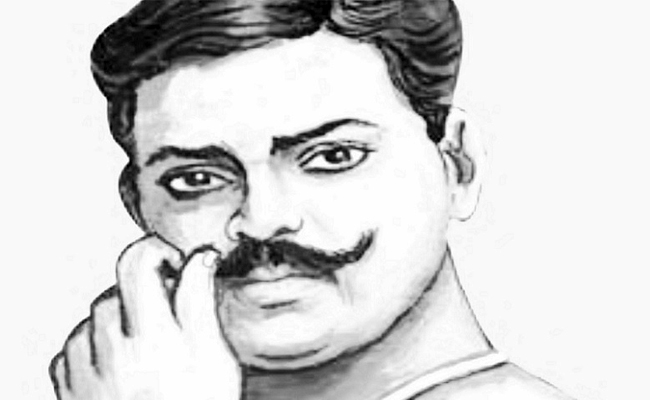Chandra Shekhar (23 July 1906 – 27 February 1931), popularly known as Azad (“The Free”), was an Indian revolutionary who reorganized the Hindustan Republican Association under the new name of Hindustan Socialist Republican Association (HSRA) after the death of its founder, Ram Prasad Bismil, and three other prominent party leaders, Roshan Singh, Rajendra Nath Lahiri and Ashfaqulla Khan.
Azad was born as Chandra Shekhar Tiwari on 23 July 1906 in Bhavra village, in the present-day Alirajpur district of Madhya Pradesh. His forefathers were from Badarka village near Kanpur (in present-day Unnao District). His mother, Jagrani Devi, was the third wife of Sitaram Tiwari, whose previous wives had died young. After the birth of their first son, Sukhdev, in Badarka, the family moved to Alirajpur State.
His mother wanted her son to be a great Sanskrit scholar and persuaded his father to send him to Kashi Vidyapeeth, Banaras, to study. In December 1921, when Mohandas K. Gandhi launched the Non-Cooperation Movement, Chandra Shekhar, then a 15-year-old student, joined. As a result, he was arrested. On being produced before a magistrate, he gave his name as “Azad” (The Free), his father’s name as “Swatantrata” (Independent) and his residence as “Jail”. From that day he came to be known as Chandra Shekhar Azad among the people.
After suspension of the non-cooperation movement in 1922 by Gandhi, Azad became more aggressive. He committed himself to achieving complete independence by any means. Azad also believed that India’s future lay in socialism. He met a young revolutionary, Pranvesh Chatterji, who introduced him to Ram Prasad Bismil who had formed the Hindustan Republican Association (HRA), a revolutionary organisation. Azad was impressed with the aim of HRA, i.e., an independent India with equal rights and opportunity to everyone without discrimination of caste, creed, religion or social status. On introduction, Bismil was impressed by Azad, when Azad reportedly put his hand over a lamp and did not remove it till his skin burnt. He then became an active member of the HRA and started to collect funds for HRA. Most of the fund collection was through robberies of government property. He also wanted to build a new India based on socialist principles. Azad and his compatriots also planned and executed several acts of violence against the British. Most of his revolutionary activities were planned and executed from Shahjahanpur which was also the hometown of Ram Prasad. He was involved in the Kakori Train Robbery of 1925, in the attempt to blow up the Viceroy’s train in 1926, and at last the shooting of J.P. Saunders at Lahore in 1928 to avenge the killing of Lala Lajpat Rai.
(Ref :www.abutimes.com & https://en.wikipedia.org/wiki/Chandra_Shekhar_Azad)
